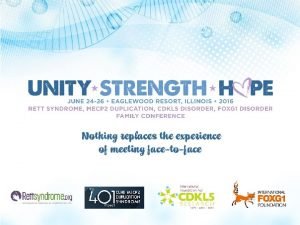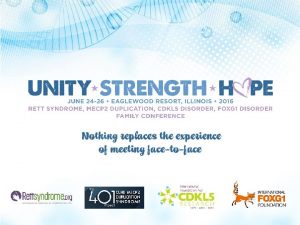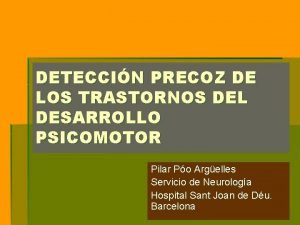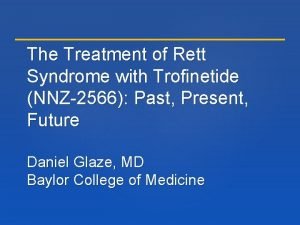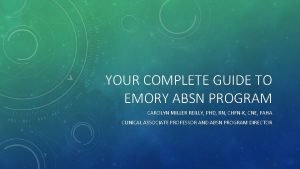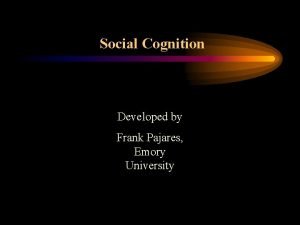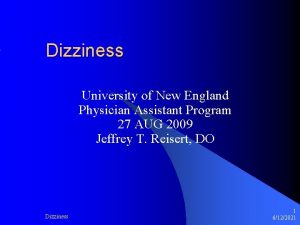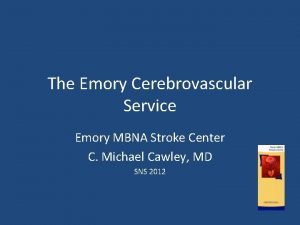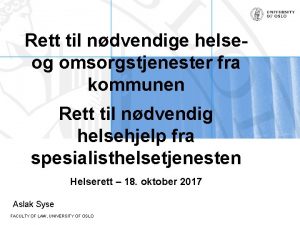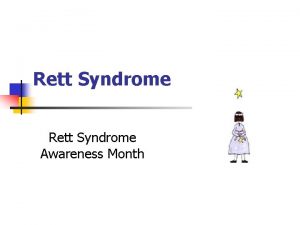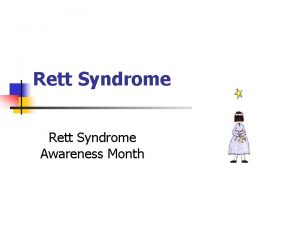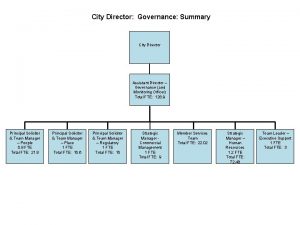Daniel Tarquinio Assistant Professor Emory University Director Rett











































- Slides: 43


Daniel Tarquinio Assistant Professor, Emory University Director Rett Clinic, Children’s Healthcare of Atlanta Picture of Speaker Here Wearables and Monitors: how they fit into care and research 6/25/2016 Eaglewood Resort

Wearables and Devices: What and Why?

Wearable Device Markets

Health Care Wearables and Devices: What and Why? What? • • • Watches Patches Socks Shirts “Smart” Bras Headgear (glasses, earpieces) Rings Implantations Life-logging video Audio (your smartphone*) Why? • • • Measure Detect Communicate/Alert Improve Assist

Wearable Devices Magazine • “Imagine a physician remotely monitoring a group of cardiology patients with Holter monitors from his home… • …and the patients, instead of suffocating in a hospital, can be resting comfortably form their homes. This world will soon be a reality and personalized and customizable forms of medicine will present in an on-demand fashion. ” • Healthcare insurance companies will soon provide premium relief for those who wear devices, which transmit data to a central database. ”

To paraphrase Mrs. Nues… • “I have one device to tell me about her breathing, another to tell me about oxygen, another to tell me about seizures, and another to tell me about sleep, and none of them talk to each other…” • Reflecting on the burden of committing time and energy to research studies: “If there ways to remotely collect health data, and share these with clinicians, then I don’t have to be a doctor, I could be a mom, and we could contribute to research. But also, fundamentally, it lets me sleep at night. ”

The problem with this scenario… • “The breathing dysfunction we are seeing has me literally a nervous wreck. There are machines all over my home beeping constantly and each time I stop breathing because I'm wondering if she is! I'm not even convinced of the accuracy of all these machines. ”

How do they fit in? Care Research Seizures Breathing Anxiety Heart conduction Medical compliance Ecological Momentary Assessment • Just-in-time Adaptive Intervention • Understanding • • • – Physiological signals – Patterns of activity for intervention/aid • Measuring – Functional or behavioral outcome measures for clinical trials

Patches

Patches

Watches and Anklets

Exoskeletons and bionics…

Bed Alarms

Oxygen

Shoes

Shirts

Headgear

Wearable Devices Magazine • “Newer technologies will develop, and soon out strip the smart watches and fitness tracking devices. Wearable devices, which integrate fashion and customization are the hottest things to come to the market in a generation. ” • “analysts at Morgan Stanley believe it will become a $1. 6 trillion business in the near future. ”

The problems • Too many devices • Unknown reliability, sensitivity, specificity – Missed events – False alarms • None are targeted to the Rett population • None incorporate practical applications to improve health and quality of life – “Bad News Machine” – Lack of reward – Result is either False Security or Alarm Fatigue

Do they measure what they are supposed to? • Physician and father of a child with epilepsy: • “He has nearly constant subclinical seizures that affect his behavior and ability to learn and remember information. He also has a grand mal seizure every 4 -6 weeks. Seizures are more than just frightening, they are life threatening. ” • “I moved my clinic closer to our home this December because I do not want to be far away in case something happens at school or home. We do our best to have someone with Reece but there are times when he is home alone, his bus brings him home before my other children get home from school. I live with the constant fear that he will have a seizure when no one is there to help him. ” • “I have searched for a device that can monitor his physiologic data to warn of an impending seizure. Finally. . . a watch is available that does just that I wanted to share this with my patients. I will be ordering one of these watches for Reece as soon as I'm finished posting this to my blog. ”

The “Embrace” watch, by Empatica: “A gorgeous watch designed to save lives” • “At Empatica, we marry the best science with the best of design and customer experience. We're proud to finally be launching Embrace, addressing the needs of all – whether you live with stress, seizures, or simply want a gorgeous way to tell the time!“ • Using movement, sweat, heart-rate, and temperature:

But wait, there’s more! And if you act fast, we’ll throw in our…

Beta testing… • “More than a month ago we started beta testing the Embrace. This has been one of the most humbling and formative experiences in the life of Empatica. ” • “You probably do not want to post what I think about it right now [on your blog]. If this were a consumer model, I would be demanding a refund. ” • “I liked that it was so fast. I had a bad seizure at home and my husband was contacted and called me immediately. ”

What happens during a seizure?

Who is having a seizure, and when?

Who is having a seizure, and when?

Who is having a seizure, and when?

Why is detecting seizures important? • Appropriate treatment hinges on accurate reporting. • Safety, especially nocturnal or autonomic seizures. • Due to the wide variety of behaviors seen in Rett syndrome, “spells” are often not seizures, and true seizures are often missed. • Dan Glaze’s 1998 study of seizures in Rett syndrome: – 82% of the spells that parents thought were seizures were actually not • “False positives” – 62% of the actual seizures captured were not recognized as seizures by the parents • “False negatives”

So how do seizure detection devices do? • Bed alarms • Watches • Video detection

Bed Alarms • “The MP 5 device was placed between the mattress and bed base between midnight and 8: 00 a. m. 64 subjects were enrolled (1528 h). Five of eight tonic-clonic seizures were detected. There were 269 false positive alarms (146 h with false positive alarms). The sensitivity and specificity of the alarm were 62. 5% and 90. 4%, respectively. ” • “In 15 patients, 69 seizures were recorded by video EEG. The ST-2 did not detect any nocturnal seizures. The MP 5 alarm detected 1 of 15 in sleeping patients: a generalized tonicclonic seizure. The Medpage seizure alarms do not appear to adequately detect nocturnal seizures. ”

Balance between false negatives and false positives

The solutions… Gari Clifford, Ph. D Biomedical Engineering and Informatics at Emory/Georgia Tech “My research interests lie in multidimensional biomedical signal processing, data fusion, noise analysis, missing data, ECG and cardiovascular modeling, crowd sourcing, supervised and unsupervised learning from massive temporal biomedical databases. ”

Quality is more important than quantity • Gari Clifford, Ph. D on the “Apple watch” health data – “The Apple watch is a flashy device you wear on your wrist that produces complete and utter nonsense. ”

“Closing the Loop” • Ecological momentary assessment • Just-in-time adaptive intervention • “I have a passion for empowering patients and families to more easily collect and report relevant, everyday health and wellness information for better managing chronic disorders. • My research in the field of Human & Computer Interaction is focused on supporting epilepsy treatment. I am working with clinicians, engineers, patients and families to develop new tools aimed at helping patients and caregivers to more accurately report nighttime seizures within the home and in clinical settings. ” – Jon Bidwell

i. Phone and Seizuretracker

Mobile Ecological Momentary Assessment • Systematic questions about real-time experiences – Good at collecting data on anything a sensor is not good at measuring • Active input vs passive input – Experience of “journaling” or even reflecting alters care – Passive devices become “abandoned” • Not just questions, patient and caregiver engagement – Patient activation measure – engagement, knowledge, and selfconfidence

Mobile Ecological Momentary Assessment • research participant to report on symptoms, affect and behaviour close in time to experience and which sample many events or time periods

Just-in-time Adaptive Intervention • Our mission is to develop learning algorithms, statistical analyses and clinical trial designs that enable the best use of mobile technologies, including cell phones, sensors, and monitors, to deliver personalized and individualized behavioral interventions. • In particular we focus on the evidence-based development of Just-In-Time Adaptive Interventions (JITAIs) in which realtime, passively or actively collected, information on the patient (e. g. , Ecological Momentary Assessments: EMA) is used to inform the real-time delivery of intervention options (e. g. , recommendations, information and prompts).

Just-in-time Adaptive Intervention • Physiological or other information guides intervention • Device asks a question about intervention to guide future interventions • Example – i. Watch and activity – “You haven’t moved in 45 minutes – you should get up and move around” – But what if you’re still because you’re listening to this fascinating talk? • What physicians do is listen, examine, assimilate, and then use algorithms and heuristics to intervene • Computer based social network intervention

The path ahead • Design integrated devices for Rett syndrome • Test the devices in Rett syndrome individuals • Limit caregiver burden and interface – Would you be able to sleep at night if you knew that the device was collecting data, and that would be evaluated in some way? – a “green light” • Close the loop from the patient and caregiver to the clinician • Manage cost (rental) • Use what you already have within arm’s reach… …or could popularize in the near future

What do you want a device to do for you? • Paige’s list: – brain-gut ties, tracking trends and identifying (and preventing) possible triggers (hunger, reflux, bowels) for dysfunction (seizures, HR, unexplained fevers, hyperventilating, tremor, etc). – Urine retention – often reported to me, and mysterious, not tied to UTIs – does it correlate to other dysautonomic conditions? – Alerts for heat stress (can’t sweat, long school bus rides) etc – Reporting skin rashes – photography? – Alerts for peripheral edema

What will this mean to you? • If we can develop tools that reliably measure and communicate critical information… • “to help me be a better parent, to help her be a better patient, to help doctors be better doctors, and for researchers to have better data… then I just imagine a better future for us as a family…”
 Sarika peters
Sarika peters Dr daniel tarquinio
Dr daniel tarquinio Integreringsloven og voksnes rett til opplæring
Integreringsloven og voksnes rett til opplæring Exclamation intonation
Exclamation intonation Rett sturman
Rett sturman Sindrome de rett
Sindrome de rett Trofinetide
Trofinetide Assistant director vicky
Assistant director vicky Cyp assistant director
Cyp assistant director Tarquino prisco
Tarquino prisco Volto della guerra
Volto della guerra Lucio tarquinio
Lucio tarquinio Data di nascita di tarquinio il superbo
Data di nascita di tarquinio il superbo Sesto tarquinio
Sesto tarquinio Promotion from associate professor to professor
Promotion from associate professor to professor Fok ping kwan
Fok ping kwan Emory absn
Emory absn Frank pajares emory university
Frank pajares emory university Emory university strategic plan
Emory university strategic plan Careminders franchise reviews
Careminders franchise reviews University of new england physician assistant program
University of new england physician assistant program Daniel cohan rice university
Daniel cohan rice university Emory ras intent to submit
Emory ras intent to submit Cr assist
Cr assist Emory urc
Emory urc Fnis emory
Fnis emory Emory healthcare human resources
Emory healthcare human resources Emory pediatric orthopedics
Emory pediatric orthopedics Redcap emory login
Redcap emory login Emory environmental science
Emory environmental science Rad wci euh
Rad wci euh Emory cme
Emory cme Whitney wharton emory
Whitney wharton emory Emory anticoagulation clinic
Emory anticoagulation clinic Emory tech support
Emory tech support Osp emory
Osp emory Emory erms
Emory erms Heriing
Heriing Emory microsoft office
Emory microsoft office Emory lims
Emory lims Emory workspace
Emory workspace Imcc emory
Imcc emory Emory spine center
Emory spine center Dr cawley emory
Dr cawley emory
